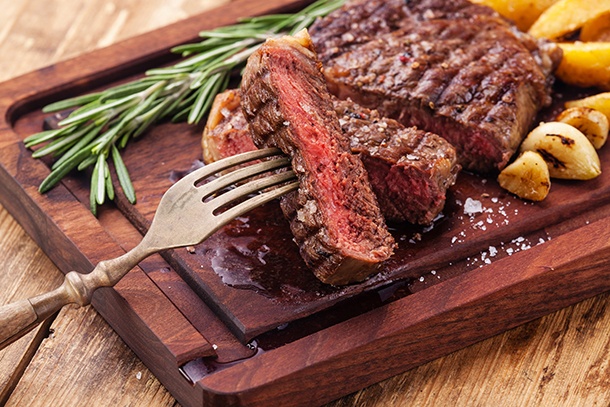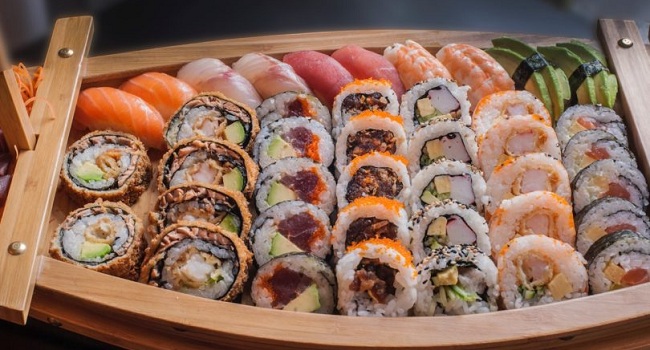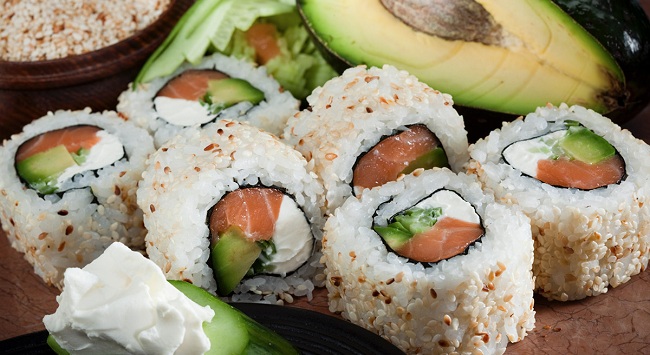A rare hero admits that clothes as a gift are not exactly what he dreams of on his only men’s holiday. But what – at least as a “warm-up” before the main present – no real man will definitely refuse, is a juicy meat steak.

- Classification of steaks
According to the most popular classification, meat is divided into 3 types: marble steaks are steaks from a thick or thin edge (Ribeye, Striploin, New York), lean steaks from tenderloin (Mignon, Chateaubriand), and alternative steaks such as Machete, Tibon steak, Tomahawk. At home, you can cook almost any kind, the main thing is to be patient and understand the cooking technology of each.
- How to choose meat for this or that type of steak
The main mistake of those who want to get an appetizing steak at home is excessive savings on meat. A regular fillet of beef for cooking Ribeye, Chateaubriand, or any other type of steak you choose is not at all suitable, it will turn out to be very tough. It is better to buy marbled meat steaks from trusted butchers or take vacuum packaging with ready-made chopped steaks. If you take a cut of beef to cut the steaks yourself, opt for the most popular ones – Ribeye and Mignon.
The quality of meat for a Minion can be checked in the following way: a finger falls into a good cut, and after you remove it, the flesh quickly recovers. Rib-eye steak meat should be fairly marbled and soft, with streaks of fat. It is much more difficult to choose a quality Top Blade and not to confuse it with the stiffer part of the shoulder blade. It will be difficult for a layman to define quality, so it is better to stick to the classics.
- Is it possible to cook from frozen meat
You can also cook frozen meat steaks. The main thing is the correct defrosting process. The meat must be put from the freezer into the refrigerator a day before cooking so that the defrosting is soft and delicate. Then there will be no heat stress for the meat, which leads to a large loss of precious juice. Defrosting meat in the refrigerator will leave all the juice inside – and the steak will be soft and tasty.
- How to fry a steak at home and how to choose a frying pan
Frying a steak is most convenient in a grill pan or a regular skillet with a very thick bottom. The thick bottom of the pan ensures that after heating it does not lose its temperature and will keep it at the same mark for a sufficient amount of time. If the pan has a thin bottom, it cools down quickly, and the meat is not fried, but boiled in its own juice.
- How to prepare meat for frying
It is necessary to get the meat out of the refrigerator a couple of hours before frying and let it reach room temperature. If you do decide to cook an alternative steak, you need to marinate it (we’ll talk about this a little later). Half an hour before cooking, the meat must be freed from the film so that the tenderloin is slightly weathered around the edges and the meat is covered with a light crust, which during frying will help keep all the juices inside the steak.
Salt and pepper the meat only after cooking! On this, I would like to focus special attention. Salting the meat before or during frying will help the juices flow out, which can make the meat tough.
- Steak cooking technology
For the preparation of marbled steaks (Ribeye, Striploin, New York), you need to use a minimum amount of oil, giving preference to olive oil. The cooking technology is quite simple. Place the meat in a well-heated frying pan and fry for 2-3 minutes on each side, then reduce the heat to low, cover the steak with a lid and let it stand for another 1-2 minutes. Please note that the longer we leave the steak covered, the higher the degree of doneness will be. For marbled steaks, medium to medium-well roast is best. At the end of cooking, you can add garlic, rosemary, thyme, or chili pepper.
Lean tenderloin steaks (Mignon, Chateaubriand) are prepared using the same technology, but with a lot of oil. After we fry the steak on both sides and it acquires a golden crust, add butter to the pan and reduce the temperature to medium. We continue to fry the meat in a mixture of butter and olive oil, constantly pouring it with the juice that comes out of the steak itself. This will give the steak the right roast.
Alternative steaks (Machete, Tibon, Tamaghawk) must be marinated in herbs in advance. To make the meat softer, you can add a little mineral water to the marinade. For alternative steaks, medium doneness is better. It is not recommended to consume this type of steak with blood.
- How to determine the degree of doneness
Do not forget to control the degree of doneness! To determine it, it is better to use a thermal needle. Each degree of roast has its own ideal temperature: Rare – 40-43 degrees, Medium Rare – 44-46, Medium – 47-50, Medium Well – 55-57, Well Done – 60 and above. If you do not have a thermal needle at hand, you can try to determine the degree by touching with your finger. If the steak is too soft, it is not cooked enough, the meat is still raw. If the steak is dense, then the roast is high. You should not cut the meat to check readiness, as the juice will immediately flow out of the meat.
- Spices and sauces for steaks
The more laconic the spices on the steak sound, the better. Therefore, do not use more than 2-3 spices at a time. Rosemary, garlic, and in rare cases – thyme are ideal for steak. To convey the aroma of these spices to the dish, it is enough to put a sprig of rosemary or a clove of garlic on a ready-made steak, the meat itself will take on their rich aroma.
There are many sauces with which it is proposed to complement the taste of the steak, for example, a sauce based on fresh herbs. To prepare it, you need to take 20 grams of fresh parsley and cilantro, half a head of garlic, chop them finely and finely with a knife until they form a gruel, add a little black pepper, salt, and chili, and pour over with olive oil. It makes a wonderful sauce that goes well with any steak.
Another quick and delicious sauce is French. If you want to make it, take your time to remove the pan in which the meat was fried. Remove the meat, put the pan on medium heat, add a little red wine, butter, chicken broth, salt, and pepper. Cook the sauce over medium heat to the desired consistency. You can add not only wine and spices but also cream, interesting Asian sauces like Teriyaki – here you can give free rein to your imagination!
- Side dishes for steak
In this matter, everything, of course, depends on the person – who likes what more. But from the point of view of physiology and proper nutrition, it is better to eat the steak along with fresh or fried vegetables. Grilled vegetables or red fresh tomatoes with onions and herbs are the most ideal options.
- Serving and serving
One of the main rules of a perfect meal: steak should be served immediately. Steak is an independent dish, simple and straightforward. You should not invent an original serving, the main thing is the unsurpassed taste of the steak itself.
Enjoy your meal!










